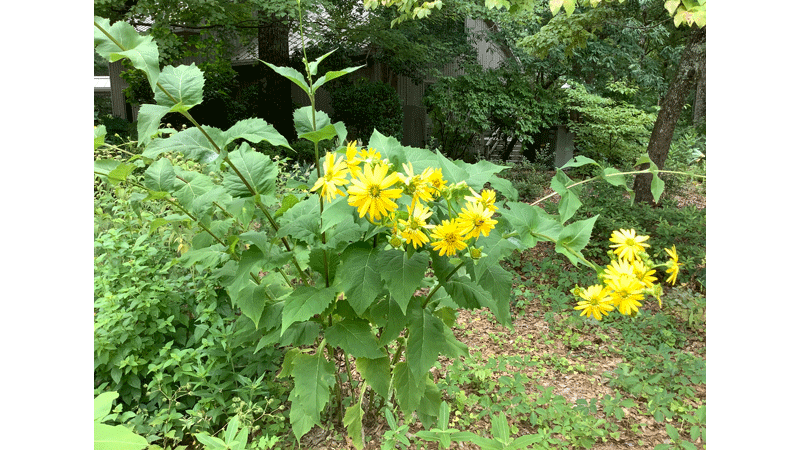Whorled Rosinweed and Cup Plant support pollinators
Published 6:44 pm Tuesday, October 18, 2022

- A Whorled Rosinweed grows to 7 feet. (Photo submitted by Virginia Master Naturalists)
|
Getting your Trinity Audio player ready...
|
By Stella Payne
Virginia Master Naturalist
I have five Whorled Rosinweeds. The seeds came from the Isle of Wight Courthouse Native Pollination Garden, near the extension office. A few years ago, during a weeding session in the fall, I gathered the seeds to propagate. I never thought they would do well and live but they did. This imposing meadow plant is part of the Aster Family, producing yellow, sunflower-like heads from June onwards.
The common names for the plants are Whorled Rosinweed and Cup Plant. The latin name is Silphium perfoliatum. The name Rosinweed refers to the gummy sap from broken stems. This sap smells like pine or turpentine.
Whorled Rosinweed has large leaves joining at the stem to form a cup that holds water. These lance-shaped leaves grow on stalks in whorls of 3 to 4, opposite or alternative. The stems can reach from 3 to 7 feet tall and are often smooth and purple. It is so much fun to see small birds drink out of the cup formed with the leaves and stem.
I have one plant in part shade at the northeast corner of my house. The second Cup Plant is doing well on the other side of the house. It gets a fair amount of sun. The photo shows how tall it grows.
They do prefer rich, well-drained soils and are drought tolerant once established. It did take a while for them to flourish to the robust size they are. Having said that, the other three plants are slow to catch up to their cousins. They were planted at the same time but in a different location. I just need to be patient and hope these three catch up.
The species is widespread across Virginia, and ranges from southeastern Pennsylvania to Missouri and south to Florida and Texas. However the Cup Plant I have, Silphium perfoliatum, is not native to the Coastal Plain but it does grow naturally in the southwestern counties in Virginia.
Look out for two other species, Silphium asteriscus, and Silphium helianthus.
The courthouse pollination garden is an ongoing demonstration project by the Virginia Master Naturalist, Historical South Side. It was started in September 2016, by Patti Boyd and her fellow cohorts. The garden contains plants that are native to Virginia and were chosen for their adaptability to local soil and climate conditions. They support native pollinators by providing nectar, pollen and by hosting caterpillars. Take a picnic and sit on the benches to enjoy this quiet space. View plants to consider for your garden.
If you are a person with a disability and require any assistive devices, services, or other accommodations to participate in this activity, please contact the Isle of Wight Extension Office at 757-365-6261 during the hours of 8:30 a.m. and 5:00 p.m. to discuss accommodations 5 days prior to the event. *TDD number is (800) 828-1120.





